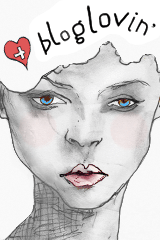Doge's Palace
0
The month of August, you know, it was full of events and I had the opportunity to visit some wonderful exhibits, but also wonderful museums, such as the Doge's Palace in Venice.
Doge's Palace has Venice history written in its walls. It is Amazing! Full of wonderful works, and magnificent in architecture. I could write a blog just to tell you about this amazing building and the history that preserves. The thing that intrigued me was the figure of the doge and the great attention that the Venetians had to avoid abuse of power. Doge was no more than a noble among nobles. Very current is not it?
The public life of the Doge could be compared to a liturgy: he was necessarily present at Repubblic ceremonies, embodying the high power of Venice as an actor.
In many masterpieces, witch I admired at the Doges's Palace, the posture of the Doge, devotedly kneeling before the lion of St Mark, effectively clarifies his first duty, that of serving the republic.
Il mese di agosto, lo sapete, è stato ricco di appuntamenti e ho avuto la possibilità di visitare alcune meravigliose esposizioni, ma anche meravigliosi musei, come il Palazzo Ducale a Venezia.
Palazzo Ducale riproduce la storia di Venezia sulle sue pareti. E' incredibile! Ricco di opere meravigliose, e grandioso nelle architetture. Potrei scrivere un blog intero solamente per parlarvi di questo straordinario edificio e della storia che conserva. La cosa che più mi ha incuriosita è stata la figura del doge e la grande attenzione che i veneziani avevano per evitare abusi di potere. Il Doge non era che un nobile tra i nobili. Molto attuale non trovate?
La vita pubblica del Doge potrebbe essere paragonata ad una liturgia: egli partecipa necessariamente alle cerimonie della Repubblica, rappresentando la potenza di Venezia come farebbe un attore.
In molti capolavori, che ho ammirato a Palazzo Ducale, la postura del Doge, devotamente inginocchiato davanti al leone di San Marco, chiarisce il suo principale dovere, ovvero servire la Repubblica.
 |
| Porta della Carta |
 |
| Titian, Doge_Antonio_Grimani_Kneeling_Before_the_Faith Tiziano, il Doge Antonio Grimani in adorazione della Fede |
It possible to contemplate the face of almost every Doge only in the Doge's Palace, the political heart of the Venice Republic.
The Doge election took place in the full assembly of the Venetian nobility, the Great Council, through a complicated system of ballots and draws. The coronation ceremony itself then took place in the courtyard of the place, at the foot of the Scala dei Giganti.
Compared to the public magnificence, the Doge's private life gives an unassuming impression. No pomp accompanied his personal outings and even the clothes he wore at everyday meetings were simpler. Apart from ceremonial occasions, the Doge was forbidden to go to any pubblic place, such that the residence reserved for him in the seat of Venetian power ended up being a genuine gilt cage. He had to personally provide for the furnishing of the rooms in wich he was to live for the rest of his life and after his Death, his family had three days to completely clear the apartment.
I find all this incredibly modern, and then visit the Doge's Palace is to immerse yourself into masterpieces which are the expression of a people and of a noble family that was passed from generation to generation the power.
If you visit Venice you can not enter Doge's Palace to discover the true history of this city!
Solo a Palazzo Ducale, cuore politico della Repubblica di Venezia, è possibile ammirare il volto di quasi ogni Doge.
L'elezione del doge avveniva nell'assemblea plenaria dei nobili veneziani, il Maggior Consiglio, attraverso un complicato sistema di sorteggi e ballottaggi. Nel cortile del Palazzo, ai piedi della Scala dei Giganti, faceva quindi seguito la cerimonia dell'incoronazione.
Se paragonata alla magnificenza pubblica, la vita privata del Doge sembra essere piuttosto dimessa. Nessuna pompa ne accompagnava le uscite private e anche gli abiti indossati nelle riunioni quotidiane erano più semplici. Eccetto le occasioni cerimoniali, al Doge era proibito frequentare i luoghi pubblici, perciò la residenza a lui riservata nella sede del potere veneziano si trasformava in un carcere dorato. Egli stesso doveva provvedere all'arredo delle stanze in cui sarebbe vissuto per il resto della vita e dopo la sua morte, i familiari avevano a disposizione tre giorni per liberare gli ambienti completamente.
Io trovo tutto questo incredibilmente moderno e quindi visitare a Palazzo Ducale significa immergersi in capolavori che sono espressione di un popolo e non di una nobile famiglia che si tramandava il potere di generazione in generazione.
Se visitate Venezia non potete non entrare a Palazzo Ducale per scoprire la vera storia di questa città!
 Sala dello Scudo |
|
Scala dei <Giganti
|
 |
| Carlo e Gabriele Caliari, il ricevimento in Collegio di un'ambasceria persiana al cospetto del Doge Marino Grimani |
 |
| Tiepolo, Venezia riceve i doni di Nettuno |
 |
| Tintoretto Il doge Nicola da Ponte |
Unfortunately I was able to photograph my visit, so all the pictures I've included in your post I got them from the network.
Purtroppo non mi è stato possibile fotografare la mia visita, pertanto tutte le immagini che ho inserito nel post le ho prese dalla rete.







_-_WGA22848.jpg)















.jpg)








